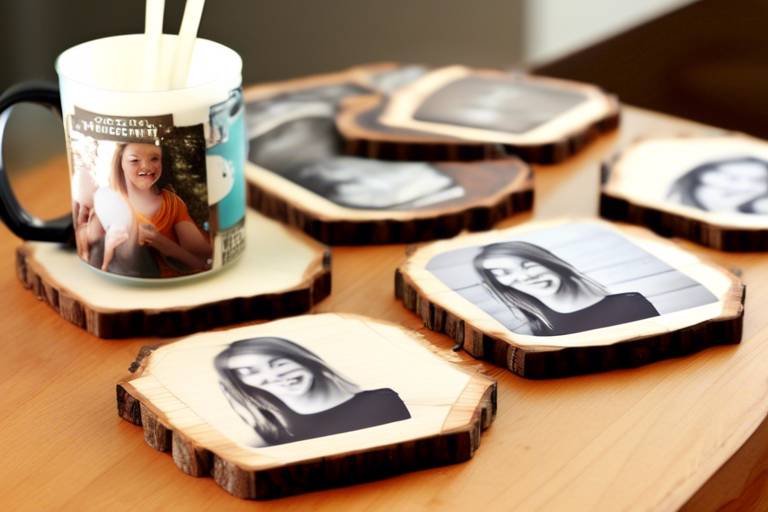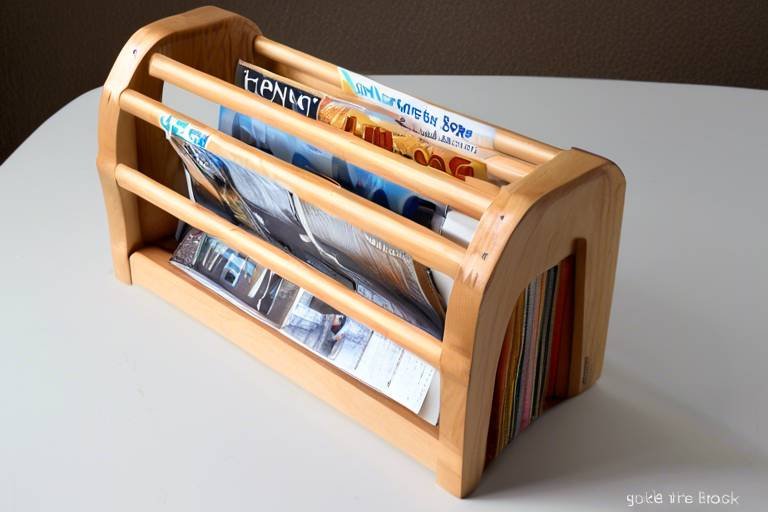Make a Wooden Triangle Shelf: A Guide
Are you looking to add a touch of style and functionality to your home? A wooden triangle shelf might just be the perfect project for you! This guide provides a comprehensive overview of creating a wooden triangle shelf, covering everything from the materials and tools you'll need to step-by-step instructions that will help you craft a stunning piece for your living space. Imagine displaying your favorite books, plants, or decorative items on a beautifully crafted shelf that not only saves space but also serves as a conversation starter. Let’s dive into the world of woodworking and unleash your inner craftsman!
When it comes to building a wooden triangle shelf, the materials you choose can make all the difference. Selecting the appropriate wood and finishes is crucial for both durability and aesthetics. You want your shelf to not only look good but also stand the test of time. Here are some popular wood types that work well for this project:
- Pine: Affordable and easy to work with, pine is a great choice for beginners.
- Oak: Known for its strength and beautiful grain, oak adds a touch of elegance.
- Maple: A hard wood that offers durability and a smooth finish.
- Plywood: Versatile and cost-effective, plywood can be used for a modern look.
Once you've selected your wood, consider the finish. Stains, paints, and sealants can dramatically change the appearance of your shelf. A natural stain can highlight the wood's grain, while a bold paint color can make a statement. Choose a finish that complements your home decor and personal style!
Before you start constructing your shelf, it’s important to gather all the necessary tools. Having the right tools on hand will ensure a smooth building process and help you achieve the best results. Here’s a list of essential tools you’ll need:
- Measuring Tape: For accurate measurements.
- Square: To ensure your cuts are straight and corners are right angles.
- Saw: A handsaw or circular saw will work for cutting wood.
- Drill: For making holes for screws and anchors.
- Sander: To smooth out rough edges and surfaces.
Having these tools ready will set you up for success, making the building process enjoyable and efficient.
Accurate measurements are vital for a well-fitting shelf. Start by determining the dimensions you want for your triangle shelf. A common size for each side of the triangle might be 24 inches, but feel free to customize it to fit your space. Use your measuring tape and square to mark your cuts clearly. When cutting the wood, remember that precision is key; even a small error can throw off the entire project. Take your time, and don’t rush the cutting process!
Working with power tools can be dangerous if proper safety measures aren’t followed. Always wear safety goggles to protect your eyes from sawdust and debris. Additionally, consider wearing ear protection if you’re using loud power tools. Keep your workspace organized and free of clutter to prevent accidents. It’s also a good idea to familiarize yourself with the tools you’re using—know how they work and how to handle them safely.
To achieve clean, precise cuts in wood, there are a few techniques you can use. If you’re using a handsaw, make sure to use long, even strokes. For circular saws, ensure that the blade is sharp and that you’re guiding the saw steadily along your marked line. Practice makes perfect, so don’t hesitate to do a few test cuts on scrap wood before you tackle your actual pieces!
Once your wood is cut, it’s time to assemble the pieces. Start by laying out the triangle shape on a flat surface. Use wood glue to join the edges of the pieces, and reinforce the joints with screws or nails for added stability. Make sure everything is aligned properly before the glue dries. This is where your square will come in handy again to ensure that your angles are accurate. A well-assembled shelf will not only look good but will also be sturdy enough to hold your cherished items.
After assembly, it’s time to give your shelf some love with finishing touches. Sanding is crucial to achieving a smooth surface—start with a coarser grit and gradually move to a finer grit for a polished look. Once you’re satisfied with the smoothness, consider applying a stain or paint to enhance the appearance. Don’t forget to seal your shelf with a protective finish to guard against wear and tear!
Different finishes can dramatically alter the look of your shelf. If you’re aiming for a rustic vibe, a natural wood stain might be the way to go. On the other hand, if you want something vibrant and modern, a bold paint color could be just what you need. Here are a few options to consider:
- Oil-based Stains: These penetrate the wood and enhance its natural grain.
- Water-based Stains: Quick-drying and easy to clean up, they come in various colors.
- Paint: A fun way to add a pop of color, but make sure to use paint suitable for wood.
- Sealants: Protect your shelf from moisture and scratches with a good sealant.
Properly mounting your triangle shelf is essential for safety and aesthetics. Use wall anchors for added support, especially if you’re mounting on drywall. Make sure to choose hardware that can handle the weight of your shelf and its contents. Once mounted, step back and admire your handiwork! You’ve just created a functional piece of art that adds character to your home.
1. What type of wood is best for a triangle shelf?
It depends on your preference! Pine is great for beginners, while oak and maple offer durability and beauty.
2. How do I ensure my shelf is level when mounting?
Use a level tool after mounting to check for evenness. Adjust as necessary before securing completely.
3. Can I use reclaimed wood for my shelf?
Absolutely! Reclaimed wood adds character and is an eco-friendly choice.
4. What is the best finish for a triangle shelf?
Choose a finish that matches your style—natural stains for a rustic look or paint for a modern twist!
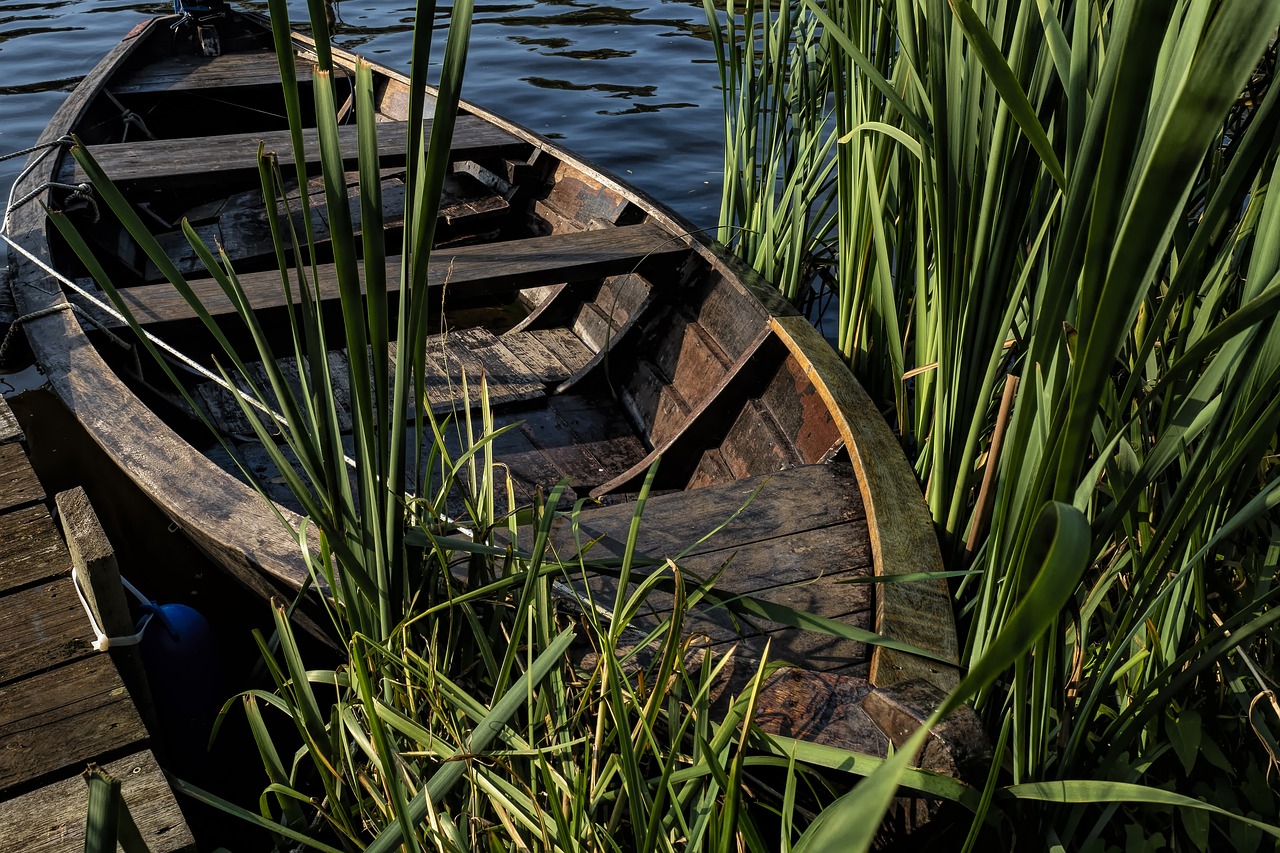
Choosing the Right Materials
When it comes to crafting your very own wooden triangle shelf, is not just important; it's absolutely essential. Think of it as the foundation of a house—if the base isn’t solid, everything else will crumble. The wood you select will not only determine the durability of your shelf but also its aesthetic appeal. So, let’s dive into the types of wood that are best suited for this project and the finishes that can enhance its beauty.
First off, you have a variety of wood types to choose from, and each comes with its unique characteristics:
- Pine: This is a popular choice for beginners. It's lightweight, easy to work with, and has a lovely natural grain. Plus, it’s usually more affordable than other hardwoods.
- Oak: Known for its strength and durability, oak can withstand a lot of weight. Its rich texture makes it a great option if you're looking for something that stands out.
- Maple: This wood is incredibly hard and is resistant to scratches and dents. If you want a sleek, modern look, maple is the way to go.
- Birch: Similar to maple, birch is a strong and attractive hardwood. It has a fine grain and can be stained beautifully, giving you a lot of options for customization.
Now that we’ve covered the types of wood, let’s talk about finishes. The finish you choose can dramatically alter the look of your shelf and protect it from wear and tear. Here are a few options:
- Stains: These penetrate the wood and enhance its natural beauty without hiding the grain. You can choose from a variety of colors to match your home décor.
- Paint: If you want a pop of color or a more modern look, paint is a great option. Just remember to use a primer to help the paint adhere properly.
- Sealants: These provide a protective layer over the wood, making it more resistant to moisture and scratches. A good sealant can prolong the life of your shelf significantly.
Ultimately, the choice of materials boils down to your personal style and the intended use of the shelf. Are you planning to display lightweight decorative items, or do you want to hold heavier books? This will influence whether you go for a softer wood like pine or a sturdier option like oak. Remember, the right materials will not only elevate the look of your triangle shelf but also ensure it remains a functional piece in your home for years to come.
In summary, take your time to consider the wood type and finish that best aligns with your vision. The right materials will transform your project from just another DIY task into a stunning centerpiece for your living space.
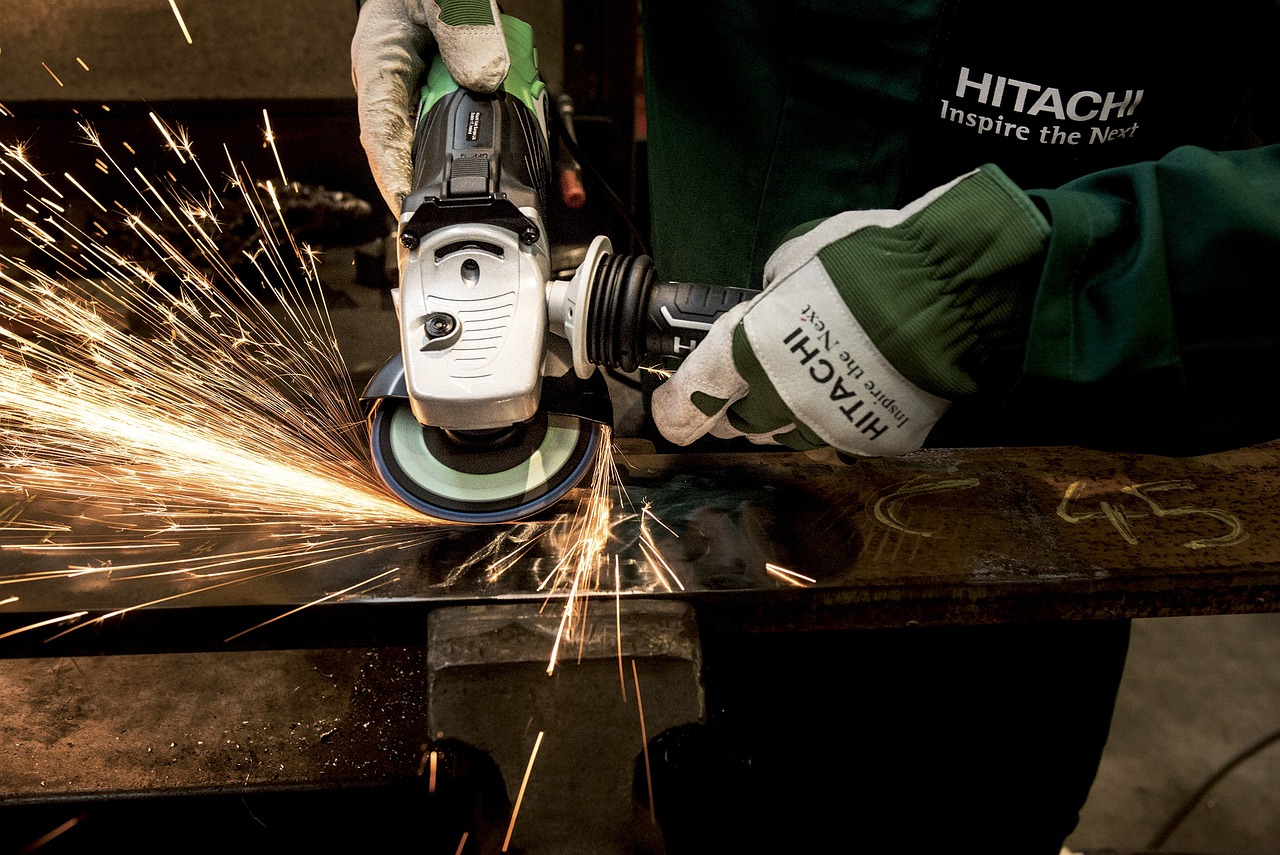
Essential Tools for the Project
Before diving into the exciting world of woodworking and creating your very own wooden triangle shelf, it’s essential to gather the right tools. Having the correct tools on hand not only makes the process smoother but also ensures that you achieve a professional finish that you can be proud of. Imagine trying to bake a cake without the right utensils; it just wouldn't turn out the same, right? The same principle applies to woodworking!
First and foremost, you'll need a circular saw or a handsaw for cutting the wood. The circular saw is a powerhouse that can make quick work of your cuts, while a handsaw allows for greater control, especially in tight spaces. If you're a beginner, a handsaw might be your best friend as you get the hang of things. Next, a drill is indispensable for making holes for screws and dowels, ensuring your shelf is sturdy and well-assembled.
Measuring is key in woodworking, so don’t forget your trusty tape measure and square. The tape measure will help you get accurate lengths, while a square ensures your angles are just right—think of it as your woodworking compass guiding you to perfection. Additionally, a level is crucial for mounting your shelf straight on the wall. Nobody wants a shelf that leans like the Tower of Pisa!
Here’s a quick overview of the essential tools you’ll need:
- Circular saw or handsaw
- Drill
- Tape measure
- Square
- Level
- Screwdriver set
- Sanding block or electric sander
Lastly, don’t underestimate the importance of safety gear. A good pair of safety goggles and ear protection will keep you safe from flying debris and the noise of power tools. Think of it as your superhero armor—protecting you while you create! With these tools in your arsenal, you're not just ready to build a shelf; you're ready to embark on a woodworking adventure!
Q: Can I use a jigsaw instead of a circular saw?
A: Yes, a jigsaw can be used for cutting wood, especially for curved or intricate cuts. However, for straight cuts, a circular saw is generally more efficient.
Q: What type of wood is best for a triangle shelf?
A: Plywood, pine, or oak are great choices for a triangle shelf due to their durability and ease of use.
Q: Do I need special screws for mounting the shelf?
A: It's best to use wall anchors and screws that are appropriate for the weight of the items you plan to place on the shelf. This ensures safety and stability.

Measuring and Cutting Wood
When it comes to crafting your own wooden triangle shelf, accurately is crucial. Think of this step as the foundation of a house; if the foundation is shaky, everything built on top will be unstable. To start, gather your materials and tools, and ensure you have a clear workspace. A cluttered area can lead to mistakes, and we want to avoid that at all costs!
First, you'll want to measure the dimensions of your shelf. A triangle shelf typically has three sides, so you’ll need to decide on the length of each side. Use a reliable measuring tape and a carpenter's square to mark your wood accurately. Remember the golden rule: measure twice, cut once! This old saying holds true in woodworking, as it can save you from wasting materials and time.
Once you have your dimensions, it’s time to make the cuts. Depending on the thickness of your wood, you might want to use a circular saw for straight cuts or a jigsaw for more intricate shapes. Here’s a quick tip: if you’re using a circular saw, set the depth of the blade just slightly deeper than the thickness of the wood. This will help you achieve cleaner cuts and prevent unnecessary wear on your blade.
As you cut, keep an eye on your lines. It’s easy to veer off course, especially if you’re new to woodworking. To help with this, you can use a straight edge or a guide to ensure your cuts are precise. For those who might be a bit nervous about cutting, practicing on scrap pieces of wood can be a great way to build confidence.
After you’ve made your cuts, take a moment to inspect each piece. Ensure that the edges are smooth and free from splinters. If you notice any rough edges, a quick pass with sandpaper can make a world of difference. Not only does it enhance the look of your shelf, but it also makes handling the wood safer.
To summarize, here are the key steps for measuring and cutting wood for your triangle shelf:
- Use a reliable measuring tape and carpenter's square.
- Measure twice to ensure accuracy.
- Choose the appropriate saw for your cuts.
- Use a straight edge or guide for clean cuts.
- Sand any rough edges after cutting.
By following these steps, you’ll set yourself up for success as you move on to the assembly of your triangle shelf. Remember, the more attention you pay to detail during this phase, the more rewarding the final product will be!
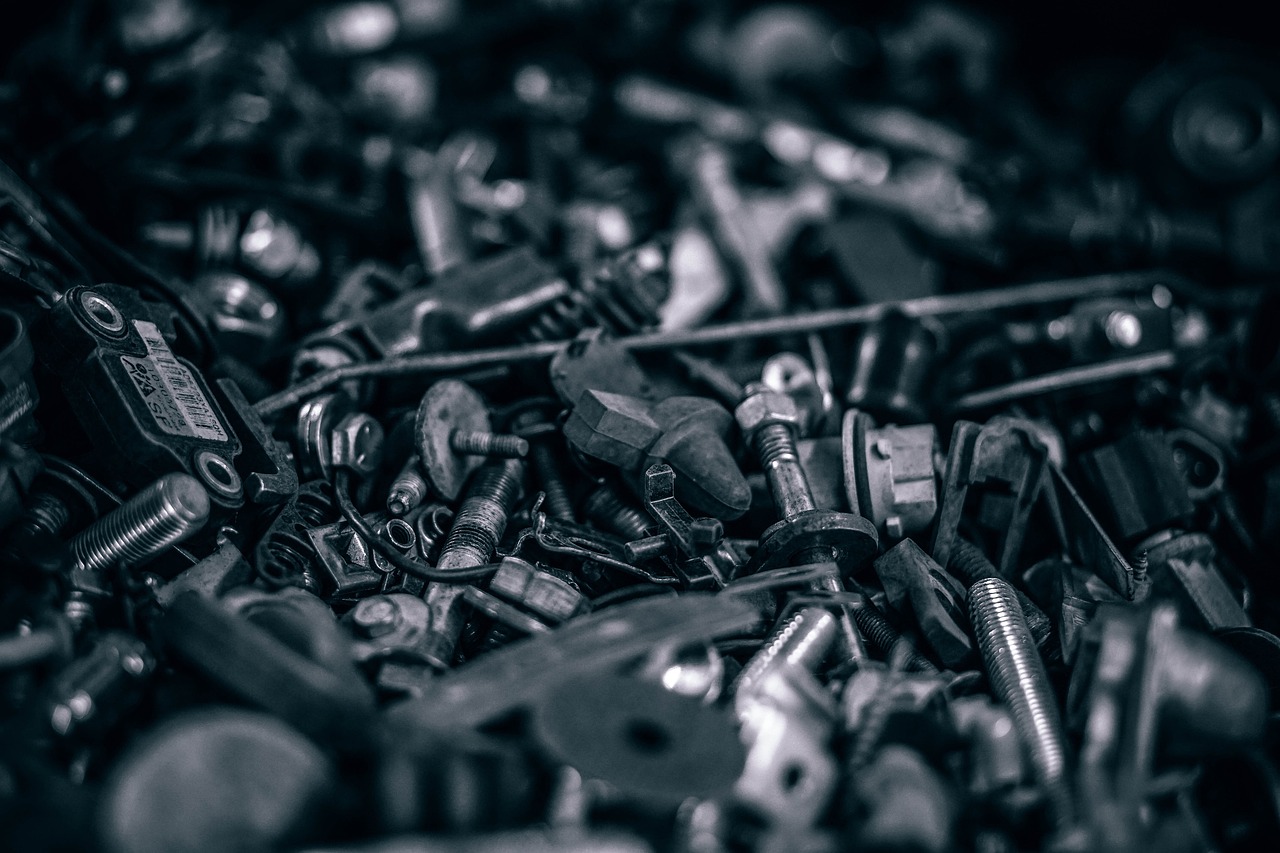
Safety Precautions
When embarking on a DIY project like creating a wooden triangle shelf, safety should be your top priority. Working with power tools and sharp materials can pose significant risks, but with the right precautions, you can minimize these dangers. First and foremost, always wear appropriate personal protective equipment (PPE). This includes safety goggles to protect your eyes from sawdust and debris, ear protection to shield your ears from loud machinery, and a dust mask to prevent inhalation of harmful particles.
Additionally, it's crucial to maintain a clean and organized workspace. Clutter can lead to accidents, so keep your area tidy and free of unnecessary items. Make sure your tools are in good condition; dull blades can be more dangerous than sharp ones, as they require more force to cut through wood, increasing the chance of slipping. Always double-check that your workpiece is secured before making any cuts, as this stability is key to preventing injuries.
Another important aspect of safety is understanding how to use your tools properly. Each tool has specific operational guidelines, and neglecting these can lead to mistakes or accidents. For instance, when using a saw, always cut away from your body and keep your hands clear of the blade's path. If you're unsure about how to operate a tool, take the time to read the manual or watch instructional videos before proceeding.
Here are some essential safety tips to keep in mind:
- Always keep your fingers and hands away from the cutting path.
- Use clamps to secure your wood pieces instead of holding them with your hands.
- Never reach over a moving blade; it's a recipe for disaster.
- Ensure that your workspace is well-lit to see clearly what you're doing.
- Take breaks if you feel fatigued; tiredness can lead to lapses in concentration.
Finally, make sure to have a first aid kit readily available in your workspace. Accidents can happen, and being prepared can make a significant difference in how you handle minor injuries. By following these safety precautions, you'll not only protect yourself but also ensure that your woodworking project is a successful and enjoyable experience.
If you have any lingering questions about creating your wooden triangle shelf, you're not alone! Here are some frequently asked questions that might help clarify your doubts:
- What type of wood is best for a triangle shelf? - Plywood, pine, and oak are popular choices due to their strength and aesthetic appeal.
- How much weight can a triangle shelf hold? - The weight capacity depends on the wood type and mounting method, but a well-constructed shelf can typically hold between 20-50 pounds.
- Can I paint my shelf instead of staining it? - Absolutely! Painting can give your shelf a unique look, but ensure you use the right primer and paint for wood surfaces.
- What is the best way to mount my shelf? - Using wall anchors and screws is recommended for maximum stability, especially if your shelf will hold heavier items.

Techniques for Smooth Cuts
This guide provides a comprehensive overview of creating a wooden triangle shelf, covering materials, tools, and step-by-step instructions to help you craft a stylish and functional piece for your home.
Selecting the appropriate wood and finishes is crucial for durability and aesthetics. This section explores various wood types and finishes suitable for a triangle shelf project, ensuring your shelf stands the test of time.
Before starting your shelf, gather the necessary tools to ensure a smooth building process. This part outlines the essential tools you'll need, including saws, drills, and measuring instruments.
Accurate measurements are vital for a well-fitting shelf. This section provides tips on measuring and cutting the wood pieces to achieve the perfect dimensions for your triangle shelf.
Working with power tools requires safety measures. Here, we discuss essential safety precautions to keep in mind while measuring and cutting wood to prevent accidents and injuries.
When it comes to making smooth cuts in wood, precision is key. The right techniques can transform your cutting experience, ensuring that your triangle shelf comes out looking professional and polished. First off, always start with a sharp blade; dull blades can cause splintering and uneven cuts. If you’re using a hand saw, make sure the teeth are sharp and well-maintained. It's often said that a dull blade is like trying to cut butter with a cold knife—frustrating and inefficient!
Next, consider the type of saw you’re using. For clean cuts, a miter saw or a circular saw is often the best choice. These saws allow for greater control and can produce straight, smooth edges. When using a circular saw, remember to set the depth of the blade to just slightly deeper than the thickness of the wood. This simple adjustment can prevent tear-out on the backside of the cut.
Another effective technique is to use a guide. Clamping a straight edge to your wood can help you achieve a straight cut. This method is particularly useful if you’re working with larger pieces of wood. By following the guide, you reduce the risk of veering off course, which can lead to uneven edges. Additionally, using painter's tape along the cut line can minimize splintering, giving you a cleaner finish.
For those who want to take their cutting skills to the next level, consider using a jigsaw for curves or intricate designs. While jigsaws are versatile, they require a steady hand and practice to master. Remember, patience is your friend when it comes to making smooth cuts. Rushing through the process often leads to mistakes that can be costly in terms of both time and materials.
Lastly, always remember to wear safety gear, including goggles and a dust mask. Protecting your eyes and lungs is just as important as achieving a smooth cut. It's all about creating a safe and efficient workspace!
Once the wood is cut, assembling the pieces is the next step. This section guides you through the assembly process, including joining techniques and ensuring stability for your shelf.
After assembly, finishing touches enhance the shelf's appearance. This part covers sanding, staining, and sealing techniques to give your triangle shelf a polished look and protect it from wear.
Different finishes can dramatically alter the look of your shelf. This subsection discusses various finish options, including stains, paints, and sealants, helping you choose the best for your design.
Properly mounting your triangle shelf is essential for safety and aesthetics. This section provides guidance on the best mounting techniques and hardware to ensure your shelf is secure and visually appealing.
Q: What type of wood is best for a triangle shelf?
A: Popular choices include pine, oak, or plywood. Each has its own aesthetic and durability, so choose based on your style preference and budget.
Q: How much weight can a triangle shelf hold?
A: The weight capacity depends on the materials used and how well it’s mounted. Generally, a well-constructed triangle shelf can hold between 20 to 50 pounds.
Q: Can I paint my triangle shelf?
A: Absolutely! Painting your shelf can add a pop of color or match your existing decor. Just make sure to use a primer and paint suitable for wood.
Q: How do I ensure my shelf is level when mounting?
A: Use a level tool when mounting to ensure it’s straight. Double-check your measurements before securing it to the wall.
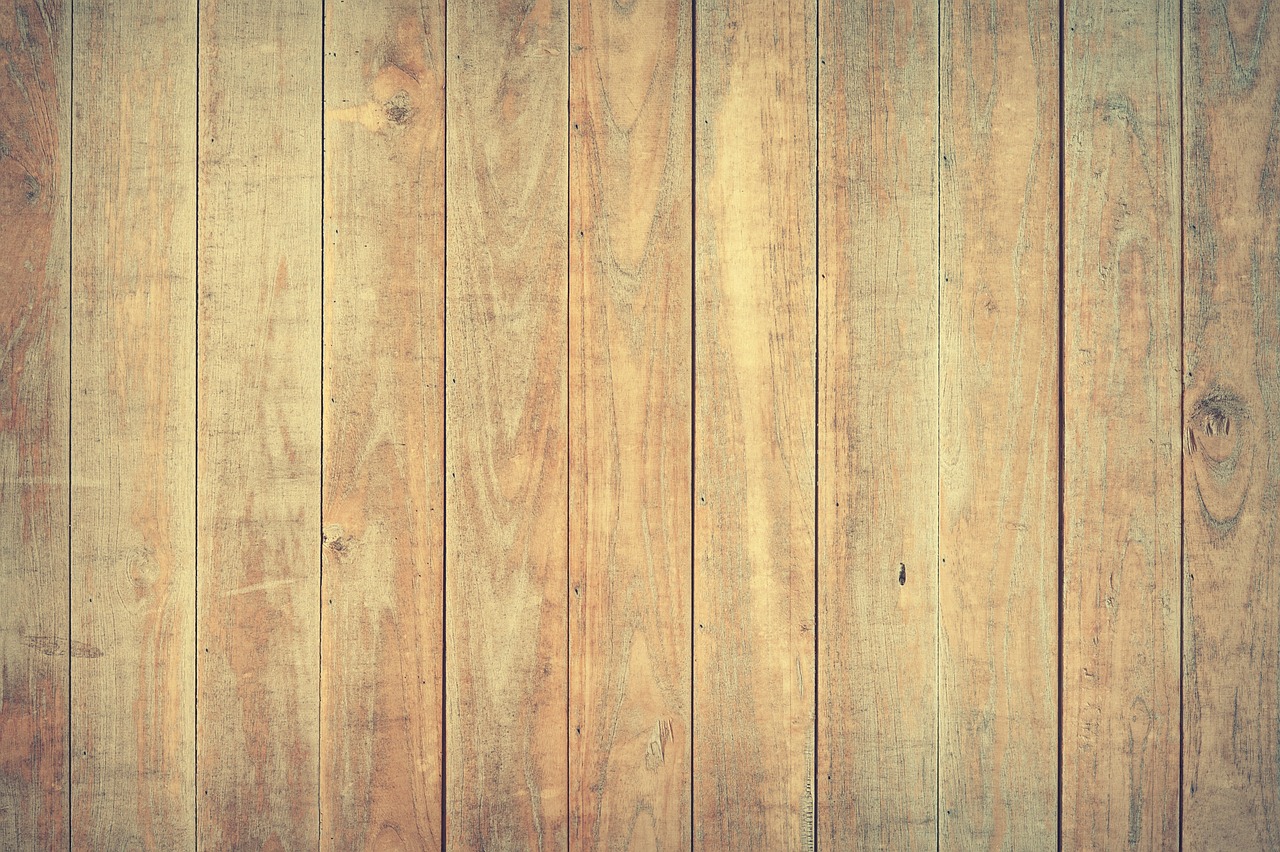
Assembling the Triangle Shelf
Now that you have all your wood pieces cut to size, it’s time to bring your triangle shelf to life through assembly! Think of this step as piecing together a puzzle; each component plays a vital role in creating a sturdy and stylish piece. The assembly process can be both exciting and challenging, but with the right techniques and a bit of patience, you’ll be able to craft a shelf that not only looks great but also holds your cherished items securely.
First, let’s talk about joining techniques. The most common methods for assembling your triangle shelf include using wood glue, screws, or even dowels. Wood glue is fantastic for creating a seamless look, as it dries clear and provides a strong bond. If you want to add extra strength, consider using screws to secure the joints, especially at the corners where the weight of the shelf will be concentrated. Dowels can also be an excellent option for achieving a clean finish while ensuring your shelf is stable.
As you start assembling, lay out your pieces on a flat surface. This will help you visualize how everything fits together. Begin by applying wood glue to the edges of the pieces you plan to join. Remember to clamp them together for a few minutes to allow the glue to set properly. If you’re using screws, pre-drilling holes can help prevent the wood from splitting, ensuring a clean and professional look. It’s essential to keep checking your angles as you go along, using a carpenter's square to ensure everything is perfectly aligned.
Once the glue has dried or the screws are in place, it’s time to add the back piece if you’re using one. A back panel can add stability to your shelf and prevent items from falling off. Attach it using wood glue and screws, making sure it’s flush with the edges of the side panels. This is where you can really let your creativity shine—consider using a contrasting wood or a decorative backing to enhance the visual appeal of your shelf.
After the main structure is together, give your shelf a gentle shake to test its stability. If it feels sturdy, congratulations! You’re almost there. If not, revisit the joints and ensure everything is secure. Once you’re satisfied with the assembly, it’s time to move on to the finishing touches. But before we get there, let’s take a moment to address some common questions about the assembly process.
- What type of wood is best for a triangle shelf? - Pine is a popular choice for beginners due to its affordability and ease of use, while hardwoods like oak or maple offer durability and a more polished look.
- How do I ensure my shelf is level? - Use a level tool during the assembly process and adjust as necessary before securing everything in place.
- Can I customize the size of my shelf? - Absolutely! Just remember to adjust your measurements accordingly for a perfect fit in your desired space.
With your triangle shelf assembled and stable, you’re one step closer to showcasing your favorite decor items. The assembly process is a rewarding experience, and with careful attention to detail, you’ll create a stunning piece that elevates your home’s aesthetic. Now, let’s move on to the finishing touches that will make your shelf shine!

Finishing Touches
After you've carefully assembled your wooden triangle shelf, it's time to give it the that will elevate its appearance and ensure its longevity. This stage is where your creativity can truly shine, turning a simple shelf into a stunning piece of decor that complements your home. The finishing process involves several key steps: sanding, staining, and sealing. Each step plays a pivotal role in enhancing the shelf's aesthetics and protecting it from the wear and tear of daily use.
First up is sanding. This is not just about making the surface smooth; it's about preparing the wood to absorb the finish evenly. Start with a coarse grit sandpaper (around 80-grit) to remove any rough spots or imperfections. Once you've tackled those, switch to a finer grit (like 220-grit) to achieve a silky-smooth surface. Remember, the smoother the wood, the better the finish will look. It’s almost like giving your shelf a spa day before its grand reveal!
Next, let's talk about staining. This is where you get to play with color and bring out the natural beauty of the wood. You can choose from a variety of stain colors, from deep mahogany to light oak, depending on your personal style and the existing decor in your space. Apply the stain with a brush or a cloth, working in the direction of the grain. Don’t rush this step; let the stain sit for a few minutes before wiping off the excess. This will ensure a rich, even color that enhances the wood's natural patterns.
Finally, we come to sealing. This is a crucial step that protects your shelf from moisture, scratches, and other potential damage. You can choose between polyurethane, varnish, or a natural oil finish, depending on the look you want to achieve and the level of protection you need. Apply the sealant with a clean brush, making sure to cover every inch of the surface. Allow it to dry completely before using your shelf, as this will ensure that the finish adheres properly and provides the best protection.
Here's a quick overview of the finishing process:
| Step | Purpose | Materials Needed |
|---|---|---|
| Sanding | To smooth the surface and prepare for finishing | Sandpaper (80-grit and 220-grit) |
| Staining | To enhance the wood's appearance with color | Wood stain, brush or cloth |
| Sealing | To protect the wood from damage | Polyurethane, varnish, or natural oil |
Once your shelf is fully finished and dried, it’s time for the final step: mounting your masterpiece. Proper mounting not only ensures safety but also enhances the visual appeal of your newly crafted shelf. So, let’s dive into how to securely mount your triangle shelf, ensuring it stands proudly in your home for years to come!
Q: How long should I let the stain dry before applying a sealer?
A: It's best to let the stain dry for at least 24 hours, but check the manufacturer's instructions for specific drying times.
Q: Can I skip sanding if my wood is already smooth?
A: While it might seem tempting, sanding is crucial for achieving the best finish. It helps the stain and sealant adhere better.
Q: What if I want a distressed look for my shelf?
A: You can achieve a distressed look by lightly sanding the edges after staining and sealing, or by using a technique called dry brushing with a lighter color paint.
Q: Is it necessary to seal the shelf?
A: Yes, sealing is important to protect the wood from moisture and wear, especially if you plan to place items on the shelf.

Choosing the Right Finish
When it comes to crafting your wooden triangle shelf, the finish you choose can make all the difference. Not only does it enhance the aesthetic appeal of your shelf, but it also provides essential protection against wear and tear. Think of the finish as the icing on the cake; it’s the final touch that can elevate your project from simply functional to a stunning piece of decor.
There are several types of finishes to consider, each with its unique characteristics and benefits. For instance, you might want to go for a stain that highlights the natural grain of the wood, giving it a warm, rich look. On the other hand, if you prefer a pop of color, a paint finish could be your best bet. Additionally, applying a sealant can protect your shelf from moisture and scratches, ensuring its longevity.
Here’s a quick rundown of some popular finishes you might want to consider:
- Oil-Based Stains: These penetrate deeply into the wood and enhance its natural beauty, but they can take longer to dry.
- Water-Based Stains: Quick-drying and easy to clean up, these stains offer a wide range of colors but may not penetrate as deeply.
- Paint: Available in countless colors, paint can completely change the look of your shelf, but it may obscure the wood grain.
- Polyurethane: This clear sealant provides excellent protection against scratches and water damage, perfect for high-traffic areas.
Choosing the right finish also depends on where you plan to place your shelf. If it’s in a humid environment, like a bathroom, a moisture-resistant finish is crucial. Alternatively, if your shelf will be in a living room or bedroom, you might prioritize aesthetics over durability. The key is to find a balance between beauty and functionality.
Moreover, don’t forget to consider the application process. Some finishes require multiple coats or specific conditions for drying, while others may be applied in one simple step. Always read the manufacturer's instructions to achieve the best results. In the end, the right finish will not only beautify your triangle shelf but will also protect your hard work, allowing you to enjoy your creation for years to come.

Mounting Your Shelf
Now that you’ve crafted your stunning wooden triangle shelf, it’s time to take it to the next level by mounting it securely on your wall. This step is crucial—not just for aesthetics, but also for safety. Imagine hanging your new shelf only to find it crashing down moments later! To avoid such a disaster, let’s dive into the best practices for mounting your shelf effectively.
First off, you need to determine the right location for your shelf. Consider the height and visibility—you want it to be eye-catching but also practical. A good rule of thumb is to mount it at eye level for maximum impact. Once you've chosen the spot, use a level to mark where the top of the shelf will sit. This ensures that your shelf won’t be tilted, which can be an eyesore.
Next, let’s talk about the hardware. The type of wall you’re mounting to will dictate the kind of anchors and screws you need. For drywall, you might use toggle bolts or wall anchors, while for wooden studs, simple screws will do the trick. It’s essential to choose the right hardware to support the weight of the items you plan to place on your shelf. Here’s a quick comparison of mounting options:
| Wall Type | Recommended Hardware | Weight Capacity |
|---|---|---|
| Drywall | Toggle Bolts, Wall Anchors | Up to 50 lbs |
| Wood Studs | Wood Screws | Up to 100 lbs |
| Concrete | Concrete Screws, Expansion Anchors | Up to 150 lbs |
Once you have your hardware ready, it’s time to drill. Make sure to use a drill bit that matches the size of your anchors or screws. If you’re drilling into drywall, be extra cautious to avoid damaging the wall. After drilling, insert your anchors and screws, leaving a little bit protruding to hang the shelf on. This part is like setting the stage for a performance—everything must be just right!
After securing the hardware, gently place your shelf onto the mounted screws or anchors. Ensure that it’s level once again before fully tightening everything down. A level shelf is a happy shelf! If your shelf has multiple points of contact with the wall, make sure each one is securely attached. This will distribute the weight evenly and prevent any potential wobbling.
Finally, step back and admire your handiwork! You’ve transformed a simple piece of wood into a functional and beautiful display. If you want to add a little extra flair, consider styling your shelf with decorative items like plants, books, or photo frames. Just remember to keep the weight limits in mind, so your masterpiece stays safe and sound.
In conclusion, mounting your wooden triangle shelf isn’t just about putting it on the wall; it’s about doing it right. With the right location, hardware, and technique, you can create a stunning focal point in your home that’s both stylish and secure. So go ahead, hang that shelf with confidence!
- What type of wood is best for a triangle shelf? - Plywood, pine, and oak are popular choices due to their durability and aesthetic appeal.
- How much weight can my triangle shelf hold? - This depends on the mounting hardware and the wall type. Always refer to the specifications of your hardware for guidance.
- Can I paint or stain my shelf after assembling it? - Yes! Just ensure it’s sanded smooth first for the best finish.
- What tools do I need to mount my shelf? - A drill, level, screwdriver, and measuring tape are essential for a successful mounting process.
Frequently Asked Questions
- What type of wood is best for making a triangle shelf?
When choosing wood for your triangle shelf, consider options like pine for its affordability and ease of use, or oak for a more durable and elegant finish. Each type of wood has its unique character, so think about the look you want to achieve!
- What tools do I need to build a triangle shelf?
To create your triangle shelf, you'll need some essential tools, including a saw (like a miter saw or circular saw), a drill, a measuring tape, and sandpaper. Having these tools ready will make your building process smoother and more enjoyable!
- How do I ensure accurate measurements for my shelf?
Accurate measurements are key! Use a measuring tape and mark your wood pieces clearly. A good tip is to double-check your measurements before cutting—it's like the old saying goes, "measure twice, cut once!"
- What safety precautions should I take while working with power tools?
Safety first! Always wear protective eyewear and ear protection when using power tools. Make sure your workspace is clear of clutter, and keep your fingers away from the blade. Following these precautions will help keep you safe while crafting!
- How can I achieve smooth cuts in wood?
To get those clean, precise cuts, use a sharp blade and take your time. If you're using a circular saw, guide it steadily along your marked line. Practicing on scrap wood can help you get the hang of it before tackling your actual pieces!
- What finishing techniques can I use to enhance my shelf?
Finishing your shelf can really make it pop! You can sand it down for a smooth surface, apply a stain for color, or use a sealant to protect it from wear and tear. Each technique adds a unique touch to your final product!
- How do I mount my triangle shelf securely?
To mount your shelf securely, use appropriate hardware like screws and brackets. Make sure to locate the wall studs for a sturdy hold. Following proper mounting techniques will ensure your shelf stays safe and looks great!







